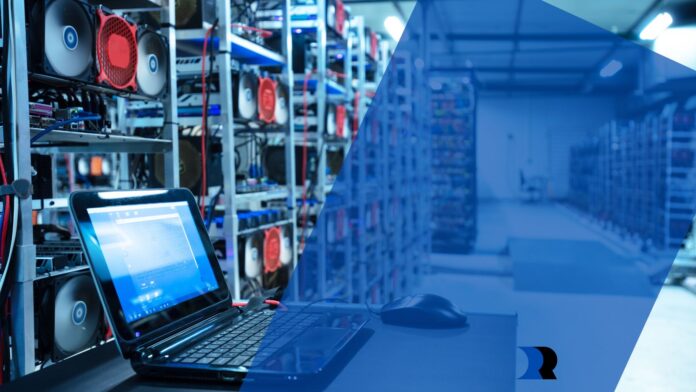Cryptocurrency mining is validating and appending transactions to the decentralized public ledger, the blockchain, accomplished by solving intricate mathematical puzzles. Originating with Bitcoin’s inception in 2009, the method initially utilized standard computers but evolved with network growth, necessitating specialized hardware such as Application-Specific Integrated Circuits (ASICs). If you wish to learn about investing with education companies, consider visiting Bitcode Method.
Basics of Crypto Mining
Understanding Blockchain and Mining Puzzles
The blockchain is a distributed ledger that records all transactions across a network. Mining puzzles, based on cryptographic principles, require miners to find a specific value (nonce) that, when hashed, meets certain criteria. This process ensures the integrity of transactions.
Proof-of-Work vs. Proof-of-Stake: Mining Algorithms Explained
Proof-of-work (PoW) and Proof-of-Stake (PoS) are two primary consensus algorithms governing mining. PoW relies on computational work, while PoS allocates mining power based on coin ownership. Understanding these algorithms is crucial for choosing the most suitable mining approach.
Overview of Mining Hardware and ASICs
Mining hardware ranges from CPUs and GPUs to specialized ASICs, which offer higher efficiency and are designed for specific algorithms. Selecting the appropriate hardware depends on factors such as the desired cryptocurrency and available resources.
Setting Up Your Mining Rig
Choosing the Right Hardware for Mining
Selecting suitable hardware involves considering factors like computational power, energy efficiency, and the algorithm being mined. ASICs are popular for Bitcoin, while GPUs are versatile for various altcoins.
Selecting the Appropriate Mining Software
Mining software serves as the interface between the hardware and the blockchain network. Various options cater to different operating systems and mining algorithms. Customization and compatibility are essential when choosing mining software.
Configuring Mining Pools for Maximum Efficiency
Mining pools allow miners to combine their computational power and share rewards proportionally. Joining a mining pool enhances the likelihood of receiving regular payouts, although miners must consider factors like pool fees and reliability.
Energy Efficiency in Crypto Mining
Environmental Concerns and the Carbon Footprint
Crypto mining’s energy consumption has raised environmental concerns. Miners and the industry, in general, are exploring ways to mitigate the carbon footprint associated with mining activities.
Green Mining Initiatives and Sustainable Practices
Efforts are underway to develop eco-friendly mining practices, incorporating renewable energy sources and optimizing energy consumption.

Green mining initiatives aim to make crypto mining sustainable in the long run.
Optimizing Power Consumption for Mining Operations
Miners can optimize power consumption by choosing energy-efficient hardware, exploring renewable energy sources, and implementing smart mining strategies. Energy efficiency contributes to both cost savings and environmental sustainability.
Advanced Mining Strategies
Solo Mining vs. Pool Mining: Pros and Cons
Solo mining involves working independently, while pool mining combines resources for a collective effort. Miners must weigh the advantages and disadvantages of each approach based on factors like computational power and potential rewards.
Merge Mining: Maximizing Rewards Across Multiple Blockchains
Merge mining enables miners to simultaneously mine multiple compatible blockchains without compromising computational power. This strategy allows for increased profitability and broader participation in different blockchain ecosystems.
Smart Mining Contracts and Decentralized Mining Networks
Smart mining contracts involve automated agreements that optimize mining activities based on predefined conditions. Decentralized mining networks aim to distribute mining power further, reducing centralization risks.
Overcoming Challenges in Crypto Mining
Dealing with Regulatory Challenges
Cryptocurrency mining faces regulatory challenges globally. To ensure the continuity of their operations, miners must stay informed about legal developments and adapt to compliance requirements.
Managing Hardware Maintenance and Upgrades
Regular maintenance and timely hardware upgrades are essential for optimal mining performance. Miners should monitor hardware conditions, address issues promptly, and stay informed about advancements in mining technology.
Adapting to Changes in Mining Difficulty and Network Hashrate
Mining difficulty and network hashrate dynamically adjust based on the overall computational power of the network. Miners must adapt to these changes by adjusting their strategies, upgrading hardware, or exploring alternative cryptocurrencies.
Future Trends in Crypto Mining
The Rise of Proof-of-Stake and Alternative Mining Algorithms
The cryptocurrency landscape is evolving, with Proof-of-Stake gaining popularity as an energy-efficient alternative to Proof-of-Work. Miners should stay informed about emerging consensus algorithms and their implications.
Integration of AI and Machine Learning in Mining Operations
Integrating Artificial Intelligence (AI) and Machine Learning (ML) technologies can enhance mining efficiency, predict market trends, and optimize resource allocation.

Miners should explore these technologies for future advancements.
The Evolving Role of Miners in the Decentralized Finance (DeFi) Ecosystem
Miners may find new opportunities and challenges as decentralized finance (DeFi) grows. Understanding the evolving role of miners in the DeFi ecosystem is crucial for staying relevant and adapting to changing market dynamics.
Conclusion
In conclusion, it is imperative to recap the fundamental techniques and strategies outlined for crypto mining, underscoring their significance in navigating the ever-changing landscape of cryptocurrency mining. Technological advancements mark the continuous evolution of this sector, shifts in consensus algorithms, and a commitment to sustainable practices. Moving forward, a responsible approach to mining is encouraged, prioritizing sustainability, environmental awareness, and compliance with regulatory standards. This commitment is vital for ensuring the crypto-mining industry’s enduring viability and ethical operation, aligning with broader societal and environmental goals.


